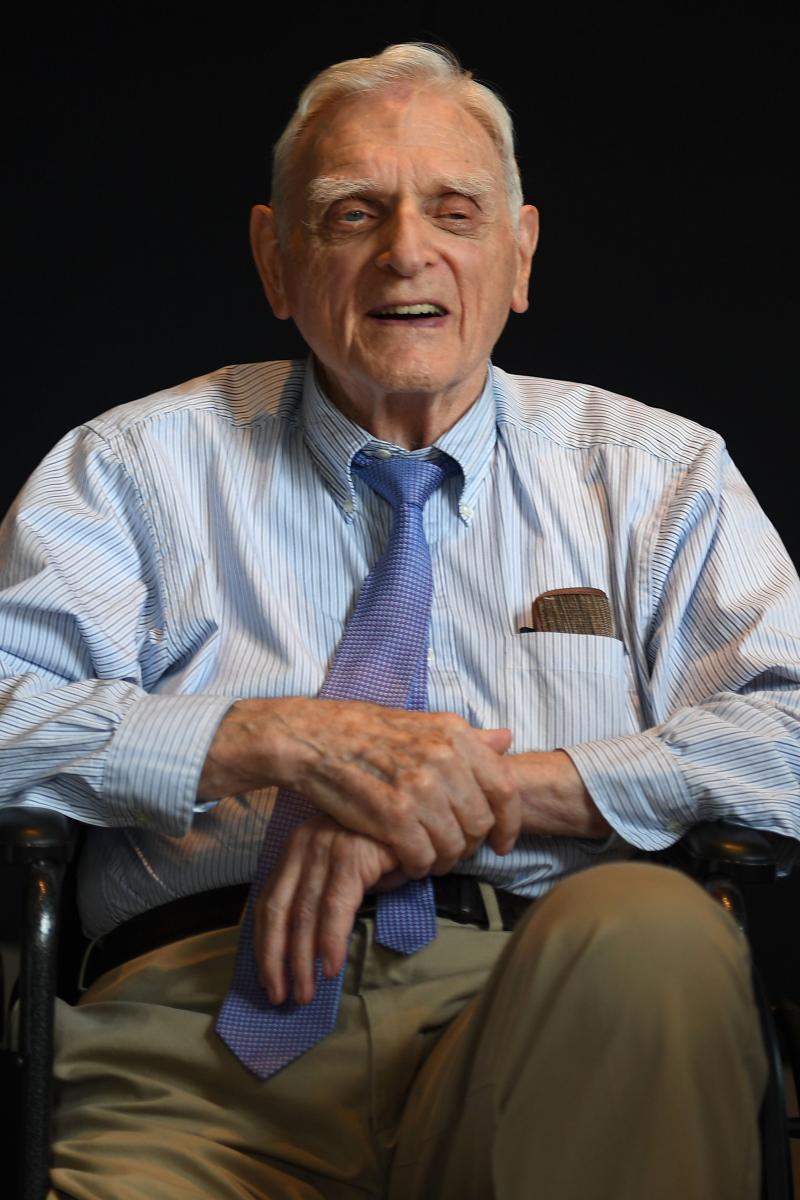
At 97 years old, John B Goodenough is the oldest laureate to receive a Nobel prize in any discipline. "Live to 97 (years old) and you can do anything," Goodenough said in a statement. "I'm honored and humbled to win the Nobel Prize. I thank all my friends for the support and assistance throughout my life."
He won the award on October 9 alongside Stanley Whittingham and Akira Yoshino for their contributions to the development of lithium-ion batteries. The trio will share the prize money of nine million kronor (£738,000). Lithium-ion batteries have long been tipped for the award, not least since they have proved pivotal in the development of the high-tech world we inhabit. The Nobel Committee said: "Lithium-ion batteries are used globally to power the portable electronics that we use to communicate, work, study, listen to music and search for knowledge.”
Born in 1922 in Jena, Germany, Goodenough earned a PhD from the University of Chicago in 1952 after serving as a meteorologist in the Army during World War II. He went on to work at the Massachusetts Institute of Technology, then at the University of Oxford, where he served as the head of the Inorganic Chemistry Laboratory, according to the University of Texas at Austin, where he currently holds faculty positions in the Cockrell School’s Walker Department of Mechanical Engineering and Department of Electrical and Computer Engineering.
In 1980, Goodenough, then aged 57, invented lithium-ion’s nervous system. His brainchild was the cobalt-oxide cathode, the single most important component of every lithium-ion battery. His variations on the design are everywhere: batteries using a lithium-manganese-oxide cathode, developed in his lab and refined at Argonne National Laboratory, are now used in many electric cars. His lithium-iron-phosphate cathode is found in many modern power tools. Moreover, lithium batteries can be used to store energy from solar and wind energy—a critical need for renewable energy technologies that only collect electricity when the sun is out or the wind is blowing. Others have tried to improve on the cobalt-oxide cathode, but all have failed.
Goodenough, who still continues to work well into his 90s reaching battery materials, said he does not regret not having made a fortune for a discovery that has powered the portable electronics revolution. “I didn’t really care too much about the money,” he said. “Everything I’ve ever done, the lawyers end up with all the money.”
He is the author of eight books and more than 800 journal articles, and he is the recipient of numerous national and international honors, including the Japan Prize (2001), the Enrico Fermi Award (2009), the Charles Stark Draper Prize (2014) and the National Medal of Science (2011), The Eric and Sheila Samsun Prime Minister’s Prize for Innovation in Alternative Fuels for Transportation, 2015, Fellow, Electrochemistry Society, 2016, Fellow, National Academy of Inventors, 2016, The Welch Award in Chemistry, 2017, and The Benjamin Franklin Award in Chemistry, 2018.








